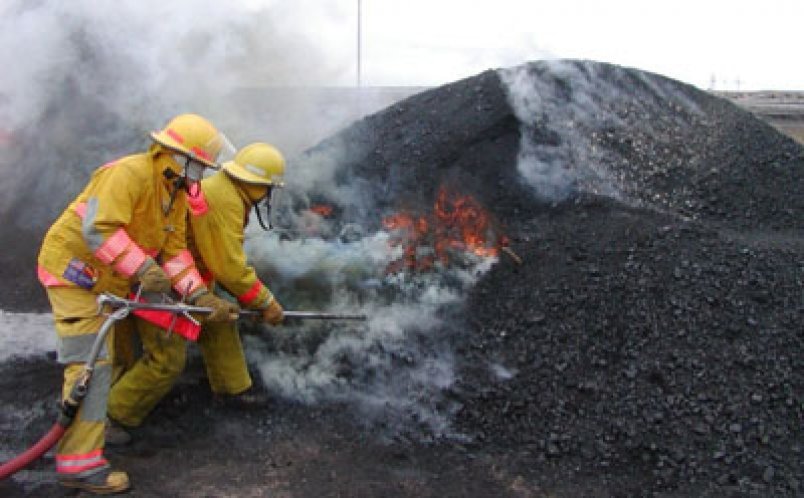Coal, a non-renewable combustible material composed of carbon and hydrocarbons, whose combustible quality can be used for electricity generation and for some other necessities. Although stacking of coal is done in open shed areas, there are also covered shed areas or completely closed coal storage or silo.
Spontaneous Combustion of Coal ?
Many issues have been encountered in bulk storage but in case of storing coal, self-combustibility comes as a special case & need careful treatment. The Spontaneous Combustion of coal in the coal storage is serious issue now a days due to global warming and other exothermic processes in coal stockpiles such as microbial metabolism, oxidation at low temperature, absorption & desorption of water by virtue of differences between real and equilibrium moisture content in coal and air. Spontaneous combustion usually begins as “hot spots” deep inside the coal/petcoke storage. They appear when coal absorbs oxygen from the air & heat generated by oxidation initiated the fire.
Key Causes of Spontaneous Coal Fires
The risk from spontaneous combustion or coal fire persists where significant amount of coal are in use or storage. The following mentioned points have been the contributing causes of spontaneous coal fires:
- New piles of coal added on top of old coal stockpiles creating segregation of particle sizes and become the major cause of heating.
- Too few temperature probing techniques or sensors installed in bunkering of coal resulting an extension in the time period before the fire was detected.
- Equipments’ failure to fight the coal fires (such as drag chain conveyer).
- Ineffective use of “Carbon dioxide fire suppression system” in plant area
- Delay in the application of water.
- Inadequate training of personnel, improper implementation of policies, & procedures prevented proper decision-making, including the knowledge to immediately overcome the coal fire.
- Long-term retention of coal in coal handling procedures also increases the probability of increase in temperature.
Preventing Spontaneous Combustion in coal stockpiles-
Preventing spontaneous combustion involves attention to many different factors, are as follows:
- Sulphur in coal liberates ample heat when they oxidize. Hence, strategies like “Know your Coal” & “Storing coal with low sulphur content” are helpful in evading spontaneous combustion in the plant area.
- Air circulation within a coal stockpile should be avoided up to possible extent since this supports increase in temperature in the stockpile.
- Use coal as quickly as feasible. The longer large coal stockpiles are allowed to sit, the more spontaneous combustion process dominates and increase the chances of coal fires.
- Do Proper inspection, test & maintenance of installed fire protection equipments on site.
- Following the “first in, first out” rule in coal stocking and stacking under petcoke dome or storage shed reduces the chances for hot spots in stockpiles by dissuading heat buildup for portions of stockpiles, which remain undisturbed for a long term.


